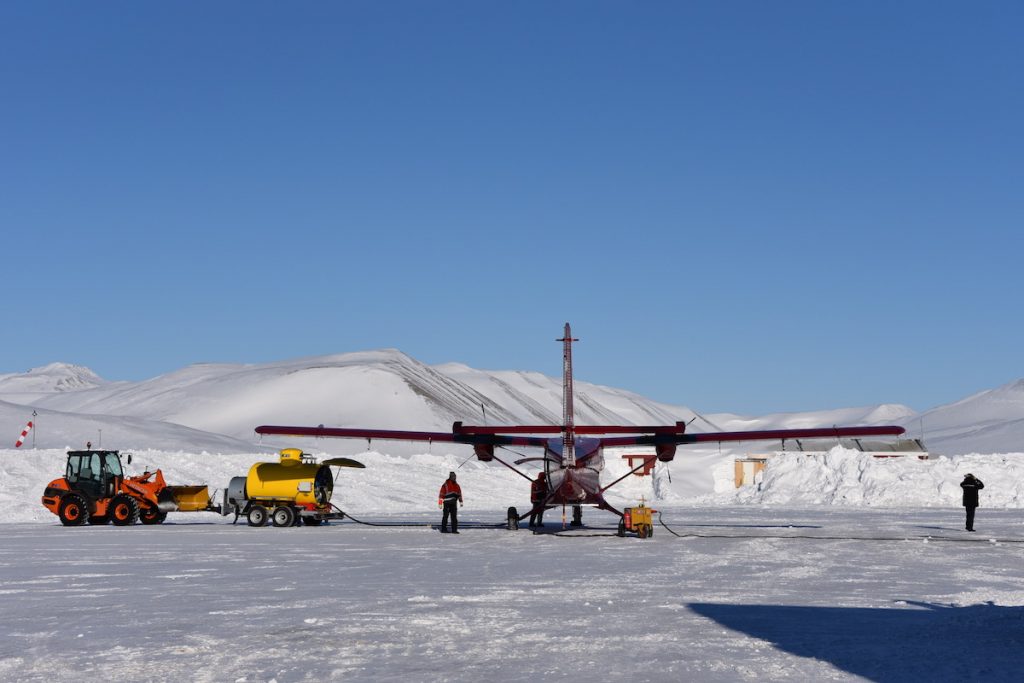The CryoVex and Karen campaign is now well and truly underway. Today, our objective is to reach within one long flight day a small Danish military station called Station Nord: no small feat for a two-propeller Twin Otter plane leaving Iceland in the morning. Station North is located at the extreme north-eastern point of Greenland and houses six hardy souls who spend up to two years at a time in what must be one of the most isolated places on Earth.

Sea ice and sea-ice leads on the way over from Iceland to Greenland. (ESA)
Luckily weather – the arbitrator in all things in campaign work – is playing along with us today. As I write this blog, we are travelling northward along Greenland’s rugged coast and have already crossed the sea from Iceland landing at the small airport of Constable Point on Greenland’s east coast.

Constable Point airport on the east coast of Greenland. (ESA)
As if on cue, we have Sun and blue skies above as wild rock and snow covered peaks roll past us below with their unending combinations of shadows and light. Next stop is Denmarkshavn, another small outpost of civilisation further up the coast and home to six hardy meteorologists.

Refuelling the Twin Otter at Constable Point, Greenland. (ESA)
Outside the temperature is –30°C despite the sunshine. Inside, however, it feels more like +30°C, way too warm for my Arctic parka in any case, which lies neatly folded in front of me. The cabin is dominated by a huge extra fuel tank taking up much of the left side. The rest of the cabin is filled with multiple radar and laser altimeter instruments to make those crucial measurements, a pêle-mêle of cables to provide power and connect all things, essential survival equipment, our luggage and… in the middle of all and definitely out of place: a large bag of potatoes occupying the space in front of the exit.

A bag of potatoes all set for the long journey northward. (ESA)
I have yet to ask why, but I assume it is for the meteorologists in Denmarkhavn. Fresh potatoes are hard to come by in this part of the world!
I’ll soon find out as in any case the journey continues. Tomorrow, if all goes well the first flights dedicated to CryoSat and to simulating future dual-frequency ice thickness satellites are planned. More on the science and mission side of things in later posts.

This jagged rock formation near Constable Point airport gives an idea of the rugged beauty of Greenland. (ESA)
Read more about the campaign: To the Arctic for CryoSat and beyond
Post from: Malcolm Davidson (Head of ESA’s Earth Observation Campaigns) on 19 March 2017








Discussion: no comments